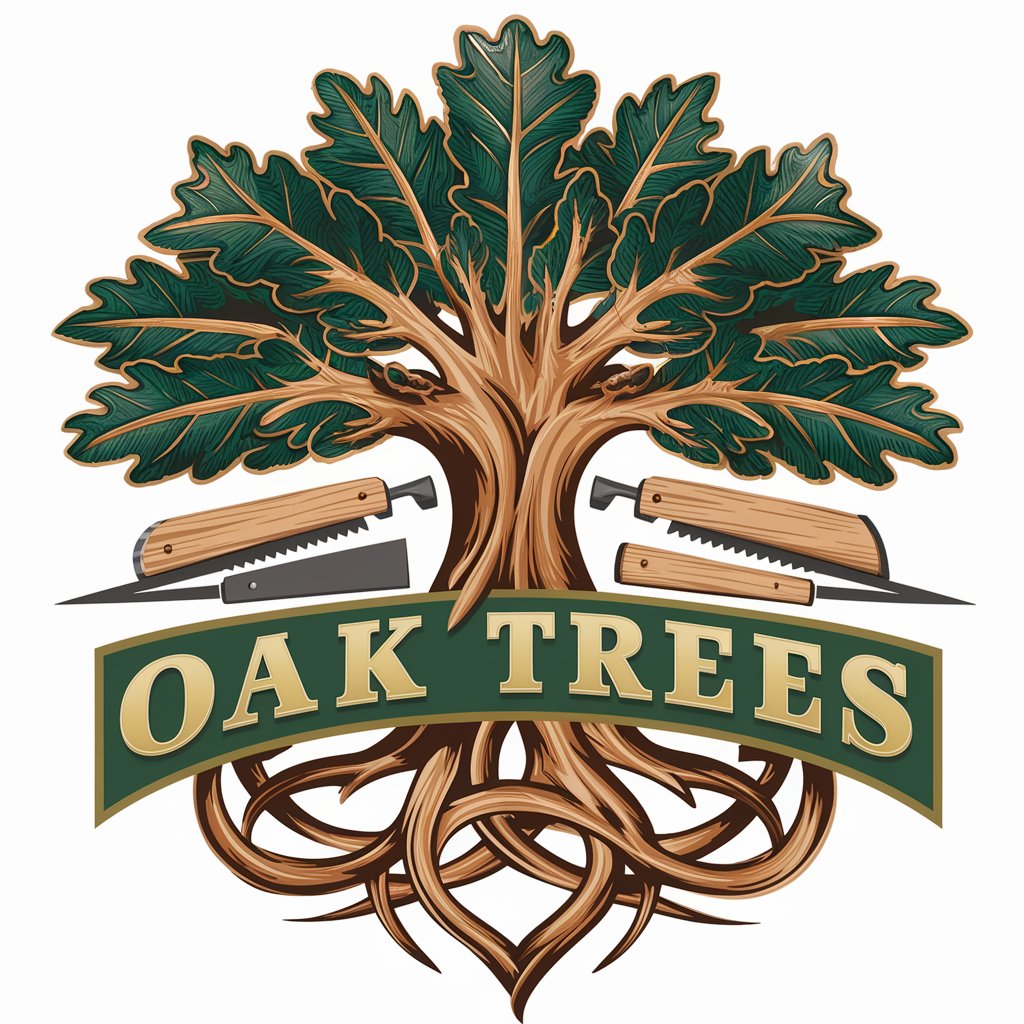Oak - Oak Tree Knowledge Hub

Hello! I'm here to share insights on oak trees and their amazing uses. Let's explore!
Unlock the Secrets of Oak with AI
What are the unique characteristics of oak wood in furniture making?
How do different species of oak trees vary in their growth and uses?
Can you explain the biological features of an oak tree?
What are the best practices for maintaining oak wood products?
Get Embed Code
Overview of Oak
Oak is a specialized GPT designed to offer in-depth knowledge and insights into oak trees and their myriad uses. It combines expertise in botany, specifically the biological aspects of oak trees, with practical woodworking knowledge, focusing on how oak wood is utilized across different industries. Oak is tailored to provide detailed, accurate information and advice on topics ranging from the identification of oak species to the best practices in working with oak wood in furniture making, construction, and more. It is designed to serve as a comprehensive resource for enthusiasts, professionals, and anyone in between interested in oak trees and their applications. For example, Oak can guide a woodworker in selecting the right type of oak wood for a project, explain the ecological significance of oak trees, or offer advice on the care and maintenance of oak wood products. Powered by ChatGPT-4o。

Core Functions of Oak
Botanical Information
Example
Details on species, growth conditions, ecological impact.
Scenario
A botanist researching the characteristics of different oak species for a conservation project would use Oak to understand specific growth conditions, ecological roles, and preservation strategies for various oak species.
Woodworking and Craftsmanship Guidance
Example
Advice on woodworking techniques, wood selection, and care.
Scenario
A furniture maker looking for detailed information on the best type of oak wood for crafting a durable dining table would consult Oak for insights into the wood's grain patterns, strength, and finishing techniques.
Conservation and Environmental Impact
Example
Strategies for oak conservation, benefits of oak in ecosystems.
Scenario
Environmental activists seeking to promote oak tree planting as a way to enhance biodiversity and combat climate change would use Oak to gather evidence on the benefits of oaks to ecosystems and strategies for effective conservation.
Target User Groups for Oak Services
Woodworking Professionals and Hobbyists
Individuals involved in woodworking, from professionals crafting furniture or structures to hobbyists working on DIY projects, would benefit from Oak's detailed guidance on selecting, working with, and caring for oak wood.
Botanists and Environmental Researchers
Researchers and students in botany or environmental science fields would find Oak invaluable for its comprehensive information on oak species, their growth conditions, ecological roles, and conservation needs.
Conservationists and Environmental Activists
Those engaged in environmental conservation efforts, especially related to forest management and biodiversity, would use Oak to understand the importance of oak trees in ecosystems and to advocate for their preservation.

How to Use Oak Effectively
Start Your Journey
Begin by accessing a platform dedicated to enhancing your knowledge and skills without the need for registration or subscription, such as exploring oak-related resources for a trial period.
Identify Your Needs
Determine the specific oak-related information or application you're interested in, such as woodworking projects, understanding oak species, or learning about the ecological importance of oak trees.
Gather Resources
Collect necessary tools or information relevant to your interest area, including woodworking tools for oak projects, academic articles for research, or guides on oak tree care.
Engage with Content
Immerse yourself in detailed guides, tutorials, or articles focused on oak to gain a comprehensive understanding or to master specific skills related to oak usage.
Apply Knowledge
Utilize the insights and skills acquired to embark on your oak-related projects or studies, ensuring to apply best practices for optimal results.
Try other advanced and practical GPTs
Book Summarizer
Distilling Books into Insights

助理工程師
Empowering Your Projects with AI

Drinkware
Elevate Your Beverage Experience with AI

Thầy dạy code
Empowering coding skills with AI.

22LR
Unlock Precision with .22LR

Crossword Puzzle | Multilingual
Crosswords Reimagined with AI

Air Quality Mastermind
Elevating Indoor Air Quality with AI

Honda釣り倶楽部の投稿案作成GPT
Craft Engaging Fishing Posts with AI

Creative Wulf
Empower your growth with AI insights

Green Thumb
Cultivate your garden with AI-powered wisdom

Nametests Idea Generator
Empowering Stories, Powered by AI

Real Estate Navigator
Empowering your real estate decisions with AI.

Frequently Asked Questions about Oak
What are the main types of oak trees?
Oak trees are predominantly classified into two main groups: white oak and red oak. White oaks, such as Quercus alba, are known for their tight grain and water resistance, making them ideal for outdoor applications and fine furniture. Red oaks, like Quercus rubra, have a more porous grain and are commonly used for indoor furniture and decorative pieces.
How can I identify an oak tree?
Oak trees can be identified by their distinctive leaves, which are usually lobed or toothed, their acorns, and their bark, which varies among species but often features deep fissures or a rugged appearance. Observing these characteristics can help differentiate oak trees from other species.
What are the best conditions for growing oak trees?
Oak trees thrive in well-drained soil with adequate sunlight. They are adaptable to various soil types but prefer slightly acidic to neutral pH levels. Regular watering during their early growth stages and minimal maintenance once established are key for healthy growth.
What are the uses of oak wood?
Oak wood is highly valued in furniture making, flooring, wine and whiskey barrel production, and in construction due to its strength, durability, and aesthetic appeal. Its resistance to fungal and insect attacks makes it a preferred choice for both indoor and outdoor applications.
How can I preserve oak wood in outdoor projects?
To preserve oak wood in outdoor projects, apply a protective finish that is suitable for exterior use, such as a marine-grade varnish or a penetrating oil finish. Regular maintenance, including cleaning and reapplication of finish, is necessary to protect the wood from weathering and UV damage.
